Hi
Years ago a friend of mine ask me for a tube phono preamp.
So after some months of tests and designing the box and pcs, serviec ,etc. the final stuff was ready
In the first photo the front panel.
In the second photo the internal seen form above. In the left the phono pcb + Ht stabilized.
On yhe right the power section with three toroids, 100m w each, two for HT and one only for filaments and services; the first step on HT was done iwth GZ34, one for each channel.
In the beginning the HT was C-L-C-L-C with a very low ripple then I move to ss HT to get a better results also under listen tests.
The entire circuit is full dual mono
There is a little pcb fixed on pin jack where is possible to select two inputs and chancge 6 different load.
In attach also the circuit; it use EF184 in triode mode for gain, all Telefunken nos/nib, and 6922 for CF
There is also the possibility to have three different gain selected from panel, 40, 43, 46 dB
The max input overload at 1 kHz is 280 mV to get 1% of THD in input with 33 Vrms in output
At 20Hz the overload is 25 mV and at 20 kHz is 800 mV
In attach the frequency response and FFT at 2 Vout plus THD vs frequency at 5 and 10 Vout
Walter
Years ago a friend of mine ask me for a tube phono preamp.
So after some months of tests and designing the box and pcs, serviec ,etc. the final stuff was ready
In the first photo the front panel.
In the second photo the internal seen form above. In the left the phono pcb + Ht stabilized.
On yhe right the power section with three toroids, 100m w each, two for HT and one only for filaments and services; the first step on HT was done iwth GZ34, one for each channel.
In the beginning the HT was C-L-C-L-C with a very low ripple then I move to ss HT to get a better results also under listen tests.
The entire circuit is full dual mono
There is a little pcb fixed on pin jack where is possible to select two inputs and chancge 6 different load.
In attach also the circuit; it use EF184 in triode mode for gain, all Telefunken nos/nib, and 6922 for CF
There is also the possibility to have three different gain selected from panel, 40, 43, 46 dB
The max input overload at 1 kHz is 280 mV to get 1% of THD in input with 33 Vrms in output
At 20Hz the overload is 25 mV and at 20 kHz is 800 mV
In attach the frequency response and FFT at 2 Vout plus THD vs frequency at 5 and 10 Vout
Walter
Attachments
-
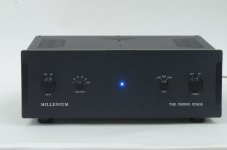 Phono_Stage_Apertura.JPG106.6 KB · Views: 306
Phono_Stage_Apertura.JPG106.6 KB · Views: 306 -
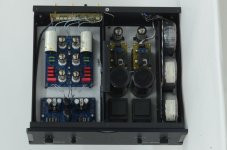 Figura 6_Phono stage_interno_1.JPG224.6 KB · Views: 303
Figura 6_Phono stage_interno_1.JPG224.6 KB · Views: 303 -
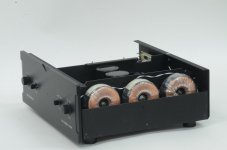 Figura 7_Phono stage_laterale.JPG135.8 KB · Views: 306
Figura 7_Phono stage_laterale.JPG135.8 KB · Views: 306 -
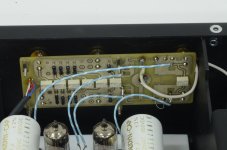 Figura 9_Phono Stage_ingresso_pcb.JPG239.4 KB · Views: 410
Figura 9_Phono Stage_ingresso_pcb.JPG239.4 KB · Views: 410 -
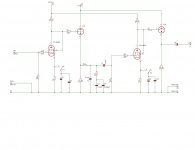 Figura 4_Schema Phono.jpg61.1 KB · Views: 398
Figura 4_Schema Phono.jpg61.1 KB · Views: 398 -
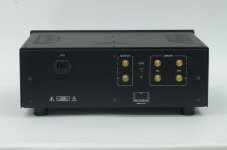 Figura 8_Phono Stage_retro.JPG119.4 KB · Views: 383
Figura 8_Phono Stage_retro.JPG119.4 KB · Views: 383 -
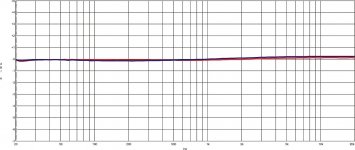 Phono_Stage_risp_L+R.jpg72.1 KB · Views: 254
Phono_Stage_risp_L+R.jpg72.1 KB · Views: 254 -
 Phono Stage_FFT_2Vout.jpg168.9 KB · Views: 235
Phono Stage_FFT_2Vout.jpg168.9 KB · Views: 235 -
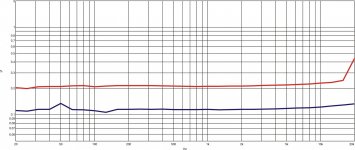 Phono Stage_THD_Freq_5_10Vout.jpg148.7 KB · Views: 270
Phono Stage_THD_Freq_5_10Vout.jpg148.7 KB · Views: 270
Interesting design. WHat made you decide to use pentodes wired as triodes?
Did you consider a CRCRCRC HT filter. Much smaller and cheaper than two chokes and lower ripple too.
Cheers
Ian
Did you consider a CRCRCRC HT filter. Much smaller and cheaper than two chokes and lower ripple too.
Cheers
Ian
I love the way you have sectioned the enclosure. Is that one from hifi2000? Did you make the internal plates yourself? I am terrible at mechanics. Nice to see a really neat mechanical solution. Well done.
Cheers
Ian
Cheers
Ian
Hi Ian
thx for appreciation
the box are done from 3D design and built by a little company specialized in mechanical stuff; hard job and expensive. Aluminium anticorodal 1,5 mm, the front panel is 10 mm.
The use of EF184 in triode was an experiment done time ago with good results in terms of gain and residual noise ( I mean the gain circuit) ; it is easy to find nos/nib tubes at reasonable prices so you can select them easily. Another great solution is the E280F in triode
There are two plate in Teflon , 8 mm, one for Power and one for phono suspended by elastic foot. The external foot are also elastic
Regarding the HT supply, the use of ss stabilized got an improvement; this phono is the quietest tube phono measured in the lab of Audioreview magazine. With a good selection of tube I found -84 dB "A" with 40 dB of gain
Also under musical aspect the results was better from classical C-R filter
Walter
thx for appreciation
the box are done from 3D design and built by a little company specialized in mechanical stuff; hard job and expensive. Aluminium anticorodal 1,5 mm, the front panel is 10 mm.
The use of EF184 in triode was an experiment done time ago with good results in terms of gain and residual noise ( I mean the gain circuit) ; it is easy to find nos/nib tubes at reasonable prices so you can select them easily. Another great solution is the E280F in triode
There are two plate in Teflon , 8 mm, one for Power and one for phono suspended by elastic foot. The external foot are also elastic
Regarding the HT supply, the use of ss stabilized got an improvement; this phono is the quietest tube phono measured in the lab of Audioreview magazine. With a good selection of tube I found -84 dB "A" with 40 dB of gain
Also under musical aspect the results was better from classical C-R filter
Walter
Very good. I am sure a lot of effort went into that but the result is worth it.Hi Ian
thx for appreciation
the box are done from 3D design and built by a little company specialized in mechanical stuff; hard job and expensive. Aluminium anticorodal 1,5 mm, the front panel is 10 mm.
The use of EF184 in triode was an experiment done time ago with good results in terms of gain and residual noise ( I mean the gain circuit) ; it is easy to find nos/nib tubes at reasonable prices so you can select them easily. Another great solution is the E280F in triode
I jut checked eBAy. EF184 are very affordable!
When you measured noise what was connected to the input? What is the reference level; -84dBA relative to what?There are two plate in Teflon , 8 mm, one for Power and one for phono suspended by elastic foot. The external foot are also elastic
Regarding the HT supply, the use of ss stabilized got an improvement; this phono is the quietest tube phono measured in the lab of Audioreview magazine. With a good selection of tube I found -84 dB "A" with 40 dB of gain
Also under musical aspect the results was better from classical C-R filter
Walter
Cheers
Ian
Hi
the standard rules for test the s/n are:
MM (my case) input at 5 mV, read the out. Then input shorted to 600 ohm and read the residual with "A" filter
MC input 0,5 mV, read the out.Then input shorted with zero ohm and read the residual with "A" filter
Walter
the standard rules for test the s/n are:
MM (my case) input at 5 mV, read the out. Then input shorted to 600 ohm and read the residual with "A" filter
MC input 0,5 mV, read the out.Then input shorted with zero ohm and read the residual with "A" filter
Walter
Standard or not, 600 ohm is utterly unrealistic as a model for an MM cartridge. You don't see the impact of the cartridge inductance and therefore almost don't see the effect of the noise current of the input termination resistor. Fortunately you don't have a bipolar transistor input stage, otherwise the same would apply to the shot and 1/f noise of the base current.
Nonetheless, pretty good results!
Nonetheless, pretty good results!
These are standard measurements so are to be considered; in addition, the Audioreview database is huge ( from 1980) and the comparision is easy to do with the same base of tests.
Walter
Walter
Beautiful work.Years ago a friend of mine ask me for a tube phono preamp.
So after some months of tests and designing the box and pcs, serviec ,etc. the final stuff was ready
thxThat's a very serious build. Really like the single chassis layout.
jeff
Walter
It isn't a big deal for tube or JFET input MM amplifiers, as almost all of them have essentially the same input noise current (about 0.5869 pA/sqrt(Hz) from the 47 kohm resistor), but it makes poorly designed bipolar input MM amplifiers seem much better than they really are, even slightly better than properly designed bipolar input MM amplifiers or properly designed JFET and tube MM amplifiers. Even the Elektor Supra 2.0 (the worst design I've ever seen, with four paralleled LT1028s to generate an equivalent input noise current as high as 6.8 pA/sqrt(Hz)) would seem to work well with this test.These are standard measurements so are to be considered; in addition, the Audioreview database is huge ( from 1980) and the comparision is easy to do with the same base of tests.
Walter
Anyway, you use a tube, so no problem.
I agree with you but I must have a comparisions in terms of test lab.
And you know that the use of certain type of tubes and a proper selections helps a lot.
I found 3-4 dB in of difference in s/n from different brand of 184 nos/nib and also similar differences in the same brand ( much less in TFK)
On my point of view to reach a value of s/n comparable with a good ss phono stage is a big goal
Walter
And you know that the use of certain type of tubes and a proper selections helps a lot.
I found 3-4 dB in of difference in s/n from different brand of 184 nos/nib and also similar differences in the same brand ( much less in TFK)
On my point of view to reach a value of s/n comparable with a good ss phono stage is a big goal
Walter
So with your case of 40dB gain the output is 0.5V rms which is -3.8dBu. So presumably you meared the noise at 84dB below this i.e -87.8dBu so the EIN is -127.8dBu. The unweighted noise in a 600 ohm resistor is -125dBu in a 20KHz bandwidth so the A weighting is providing a significant advantage. Do you happen to have an unweighted figure?Hi
the standard rules for test the s/n are:
MM (my case) input at 5 mV, read the out. Then input shorted to 600 ohm and read the residual with "A" filter
Walter
Cheers
IAn
The noise bandwidth of an A-weighting filter is about 13 kHz, but that doesn't say anything because it doesn't include the RIAA weighting. The noise bandwidth of a cascade of RIAA correction and A-weighting has a noise bandwidth of about 3219 Hz relative to the gain at 1 kHz, if I remember well.
So 84 dB below 5 mV is 0.3155 uV RIAA- and A-weighted equivalent at the input. With a noise bandwidth of 3219 Hz, that is the same total noise as would be produced by 5.56 nV/sqrt(Hz) of white noise at the input. (The noise of a tube is normally not white over the audio band, 1/f noise is far from negligible, but still one can calculate an equivalent white noise density that would produce the same total weighted noise.) A 600 ohm resistor at 20 degrees C produces 3.11668 nV/sqrt(Hz) of thermal noise.
The RIAA- and A-weighted integral noise figure is just above 5 dB into the unrealistic 600 ohm and no inductance source. With a 500 mH cartridge, the 47 kohm termination resistor will contribute more to the RIAA- and A-weighted noise than the rest of the amplifier.
All in all, pretty good!
The RIAA- and A-weighted integral noise figure is just above 5 dB into the unrealistic 600 ohm and no inductance source. With a 500 mH cartridge, the 47 kohm termination resistor will contribute more to the RIAA- and A-weighted noise than the rest of the amplifier.
All in all, pretty good!
By the way, when you compare Walter's amplifier with one having an input noise of 0.45 nV/sqrt(Hz) and 6.8 pA/sqrt(Hz), roughly the Supra 2.0 figures, and calculate the RIAA- and A-weighted noise, you get this:
600 ohm source: Supra 2.0 is 0.68 dB quieter than Walter's amplifier
600 ohm in series with 500 mH source: Walter's amplifier is 19.21 dB quieter than the Supra 2.0
600 ohm source: Supra 2.0 is 0.68 dB quieter than Walter's amplifier
600 ohm in series with 500 mH source: Walter's amplifier is 19.21 dB quieter than the Supra 2.0
Which makes it about 8dB lower than a 20KHz bandwidth so the noise in the 600 ohm resistor becomes about -133dBu which as you say makes the noise figure about 5dB. Definitely a very good result.The noise bandwidth of an A-weighting filter is about 13 kHz, but that doesn't say anything because it doesn't include the RIAA weighting. The noise bandwidth of a cascade of RIAA correction and A-weighting has a noise bandwidth of about 3219 Hz relative to the gain at 1 kHz, if I remember well.
Cheers
Ian
- Home
- Amplifiers
- Tubes / Valves
- The Phono Stage, single child